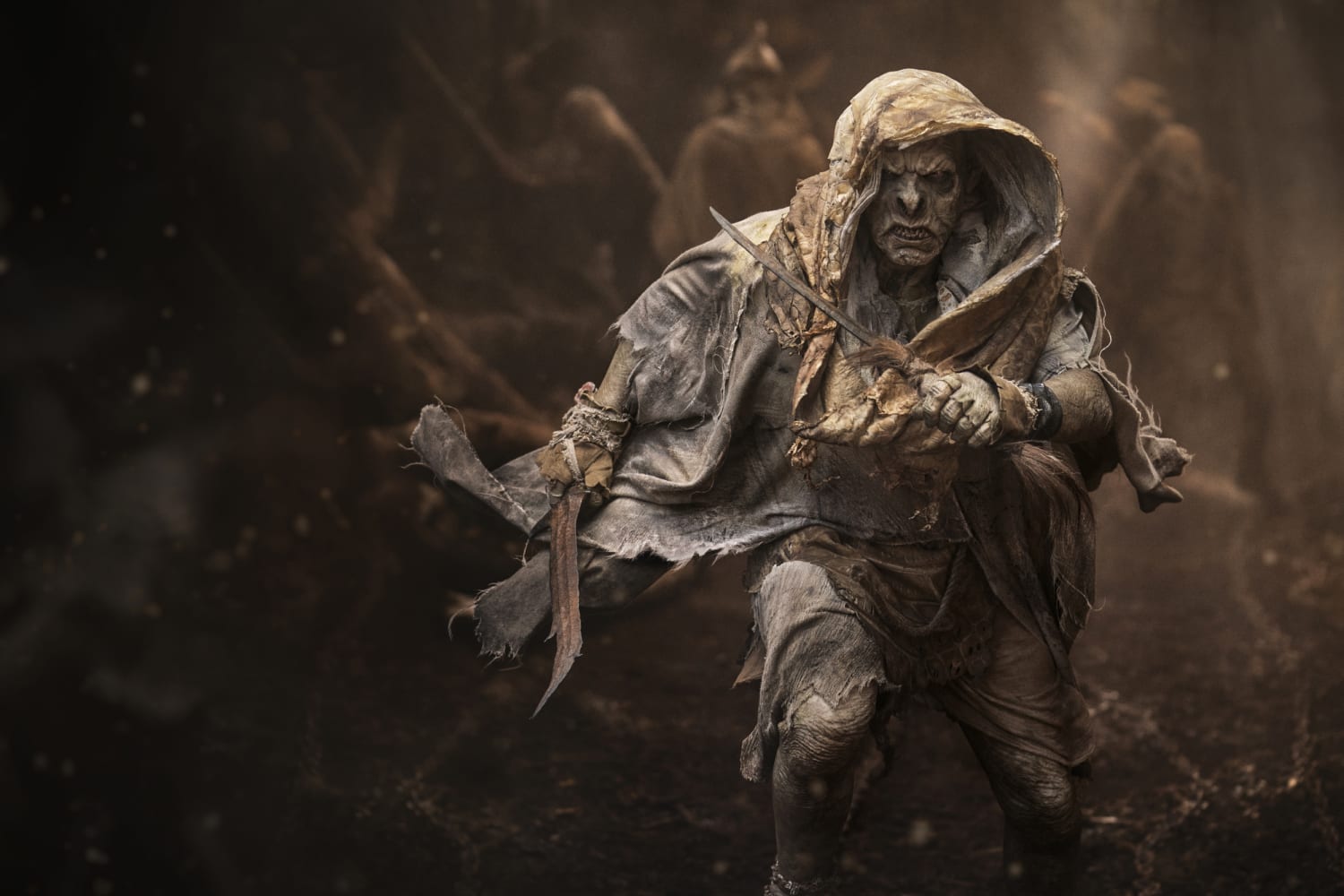
J.R.R. Tolkien’s novels are often seen as a rebuke to fascism. But like other fascist rebukers of his day, Winston Churchill for example, his “Middle-earth” fantasy world is not free from racist philosophy. The new Amazon Prime series, “The Lord of the Rings: The Rings of Power,” which is based on Tolkien’s work, makes a deliberate effort to quietly confront that uncomfortable legacy through its casting choices. It’s an admirable decision, but it’s limited by the deeply ingrained ideas of racial difference and racial determinism in Tolkien’s world.
Tolkien was not an outspoken racist like H.P. Lovecraft, but there’s a fairly straightforward case to be made that his books include racist ideas.
Tolkien was not an outspoken racist like H.P. Lovecraft, but there’s a fairly straightforward case to be made that his books include racist ideas. The evil wizard Sauron is associated with darkness. His cannon fodder are orcs, debased humanoid creatures who live only to fight and hate. Tolkien described them in a letter as “squat, broad, flat-nosed, sallow-skinned, with wide mouths and slant eyes: in fact degraded and repulsive versions of the (to Europeans) least lovely Mongol-types.”
In contrast, the elves, the epitome of purity and good, are associated with whiteness and fair skin. Elrond and Arwen (technically half-elven characters) are unusual in being part human and having dark hair.
The much-lauded Peter Jackson “Lord of the Rings” film trilogy was wonderful in many ways, but it did little to challenge this tie between white skin and goodness. The main protagonists were virtually all white; the wonderful Maori actor Lawrence Makoare was cast in villain parts as the Witch King of Angmar and Lurtz the Uruk-Hai. The good humans in the film have clothing and culture based on northern Europeans. The evil humans like the Haradrim are based on Middle Eastern peoples, or other non-European cultures.
“The Rings of Power” — an eight-episode prequel to “Lord of the Rings” and loosely based on the original’s appendices — is deliberately different. It’s true that the lead protagonist in the ensemble cast is the warrior elf Galadriel (Morfydd Clark). Galadriel, per Tolkien’s text, is very blond. But in this Middle-earth, skin tone varies widely among the forces of good. Ethnically diverse leads featured in the first two episodes available for review include the elf guard and warrior Arondir (Ismael Cruz Córdova), the Harfoot/Hobbit leader Saddoc Burrows (Lenny Henry), the dwarf princess Disa (Sophia Nomvete), and the human healer Bronwyn (Nanzanin Boniadi).
By including people of color, the series pushes back against Tolkien’s equation of evil with dark skin. It also gives the narrative some depth when it addresses prejudice or discrimination.
Humans in the series, for example, are mistrustful and resentful of elves. If all the elves were white, this could feel presumptuous. It’s another instance of white people imagining they are the target of the violence they’ve directed at others, as in the “X-Men” films, where white characters are discriminated against for being mutants, or movies like “Red Dawn,” in which white characters experience colonialism like the Vietnamese.
When the show depicts the irrationality and cruelty of prejudice against the elven Arondir, though, the rebuke of racism in the real world is much clearer. The show can even be read as responding to and rejecting the racism in its own fandom, where some commenters have railed against casting people of color as elves, much as humans in Middle-earth rail against having elves as neighbors.
Aspects of racism survive in “Rings of Power,” however. These elements aren’t unique to Tolkien; evil, corrupt enemy races are a standard feature of both fantasy and science-fiction at this point. But the ubiquity of the trope arguably makes questioning it even more important.
Cutting any remaining links between orcs and real Black and Asian people is a great step. And I’m sure many Tolkien fans would argue that the grotesque, warty orcs we see in “Rings of Power” are pure fantasy.
As we know from wartime propaganda and genocidal propaganda, fantastical portrayals of designated evil enemies can still be damaging.
But as we know from wartime propaganda and genocidal propaganda, fantastical portrayals of designated evil enemies can still be damaging. Nazi caricatures of Jews, Jim Crow-era caricatures of Black people, and even American World War I caricatures of Germans all used imagery that was violent, ugly, monstrous. Racists may claim that these caricatures are based on reality. But that’s an obvious lie. They’re drawn from hate, not from truth.
Demonizing and racializing enemies in wartime can also be used to justify atrocities. If your enemies are pure evil, you can’t accept any surrender or compromise.
And sure enough, “Rings of Power” revolves around eternal conflict. Galadriel lost loved ones in the ancient wars against the evil wizard Sauron, who she believes may still be alive. She searches for him over centuries, an old soldier who will not put down her weapons. Other elves, including Elrond (played not very compellingly by Robert Aramayo), argue that Sauron is gone; they urge a return, finally to peace. But for anyone familiar with Tolkien, or with popular narratives in general, it’s easy to figure out who the series believes is right.
Vigilance against evil is certainly important. But forever militarization against racialized external enemies may not be the message we need right now. The blonde, pure Galadriel demanding that the borders be manned forever against the poison of evil is uncomfortably familiar in an America where the right-wing continues to demonize immigrants as a source of violence and disease.
Racism is hatred directed at particular people. But it’s also a vital part of a process or a system used to mark certain groups for violence. “Rings of Power” does an admirable job of rejecting the animosity toward Black and Asian people found in Tolkien’s work. But like so many fantasy (and nonfantasy stories), it still ties adventure, virtue and empowerment to the righteous genocidal slaughter of some other hated race.
Source: | This article originally belongs to Nbcnews.com










